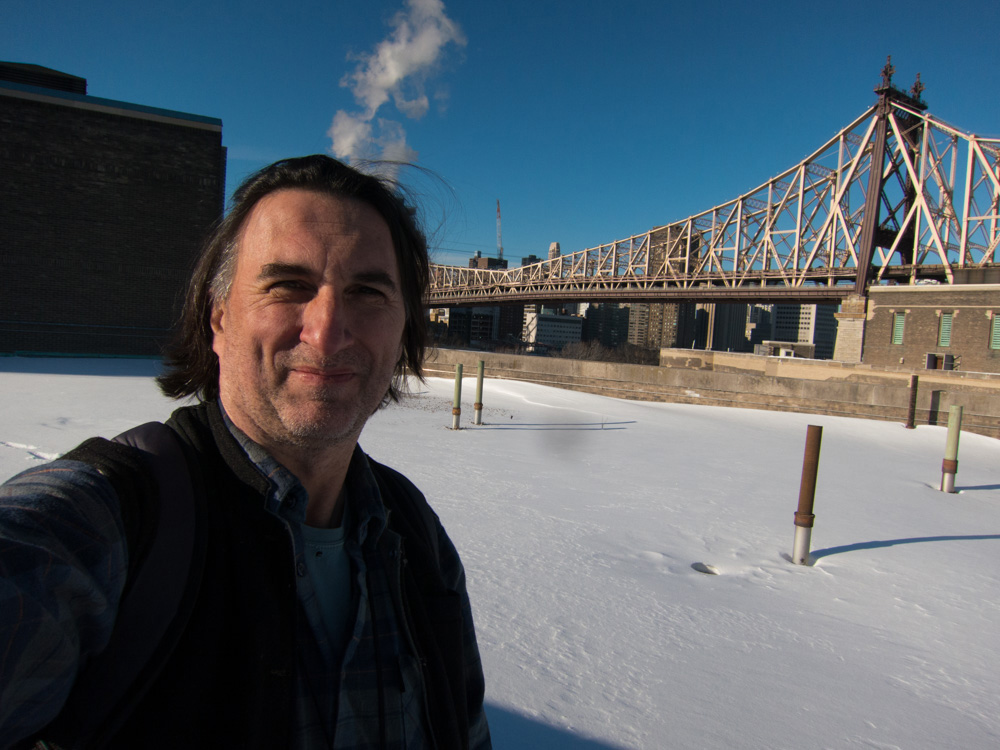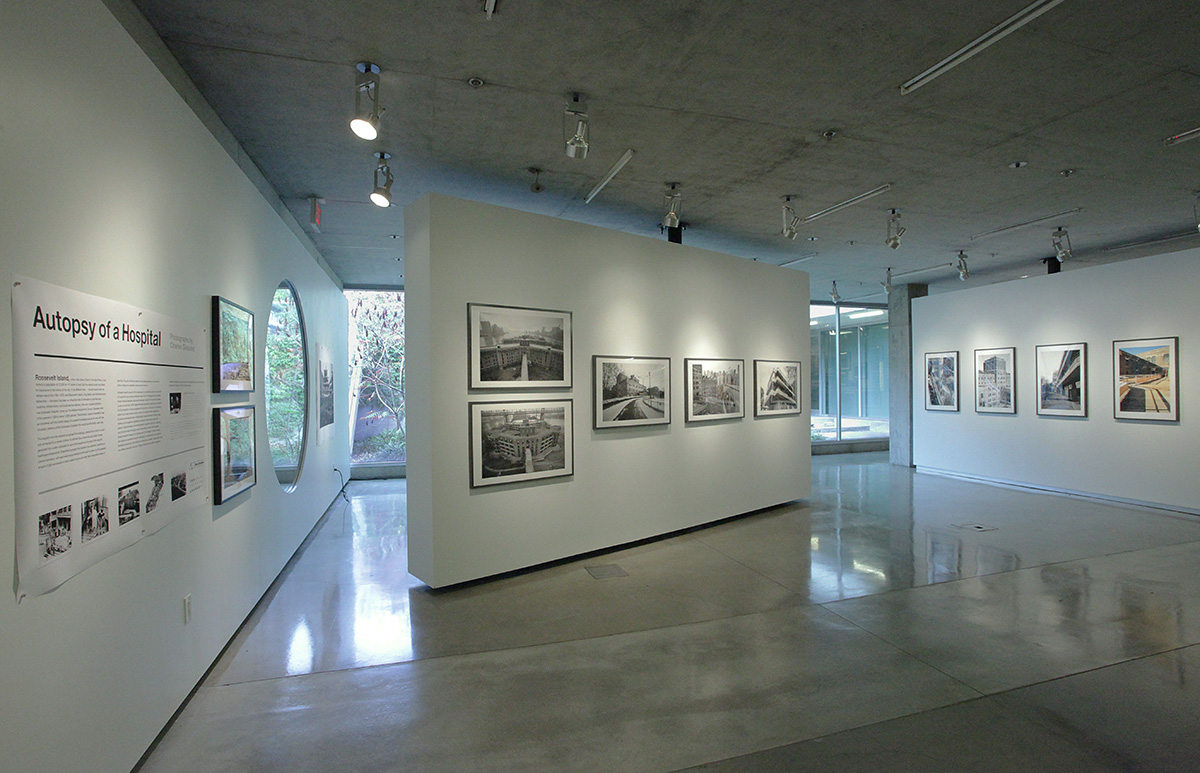'Goldwater' explores former Roosevelt Island landmark
By Daniel Aloi

When Goldwater Memorial Hospital closed at the end of 2013 to make way for the new Cornell Tech campus on Roosevelt Island in New York City, architect-turned-photographer Charles Giraudet began a race against time. He set out to document the structure, which opened in 1939 for chronic care and research. He took more than 18,500 photographs of the hospital after patients moved out and before the last of it came down in 2015.
“When it was built, it was seen like when we went to the moon – it was a great achievement,” Giraudet said. “We were going to take care of people with chronic diseases, we were going to cure people with polio.”
Sixty-two of his images are on display until Nov. 22 in “Goldwater: Autopsy of a Hospital,” in the Bibliowicz Family Gallery in Milstein Hall. The gallery is open weekdays, 9 a.m. to 4:30 p.m.
Giraudet’s fascination with the hospital “started 25 years ago,” he said. “I came to New York in ’87. I spotted the building while exploring New York; I was interested in the modernist architecture, the ocean liner aesthetic.”
When he learned that the hospital would be emptied and demolished, “for the next three months, I tried to gain access. [Dean of Architecture, Art and Planning] Kent Kleinman and the Architectural League of New York were interested in documentation, so I got access. Then, it was a running deadline,” he said. “I was given two weeks to do the work, then obtaining all the demolition permits took a whole lot of time, and I did it over 20 months. The first five months, I went in seven days a week.”
In the end, he photographed “every single room except for four,” he said.
The massive facility was 900,000 square feet, with 32 wards comprising more than 800 rooms, as well as pharmacies and research labs, and ancillary services including shops for building trades and wheelchair repairs.
“Even with 62 images, it’s impossible to get the scope of it,” he said while hanging the exhibit. “It was a town, a building that could work in isolation. They prepared all their food from fresh ingredients and they processed their own garbage; that’s the way they used to conceive of hospitals. The plans are amazing, with the myriad small functions and rooms destined for future research.”
Goldwater was seen as an important research facility; achievements there include innovative research on malaria during World War II, and key studies of tuberculosis and arthritis. Biochemist Julius Axelrod won a Nobel Prize in 1970 for his research at Goldwater on pain relief.
Giraudet wanted to capture every detail to explore the methods and intentions of architect Isadore Rosenfield, who also wrote books about designing hospitals with “a very humanitarian, patient-centric approach to care,” he said.
In the 1930s, health care in New York City was in dire need of overhaul, he said. Mayor Fiorello La Guardia tasked city health commissioner Dr. Sigismund Schulz Goldwater to redesign the city’s hospitals, and Goldwater set up a design competition for a chronic disease facility.

Rosenfield was selected to design the hospital and “used a very functionalist approach,” Giraudet said. “In a time before antibiotics, the approach to the cure was very different than it is now. He was seeing architecture as part of the cure – to provide healthy air, all the bedrooms would have balconies and access to the outdoors. … Families would be able to visit, and the patients would not be in isolation. The doctors would work in the best of conditions.”
Earlier this year, the Herbert F. Johnson Museum of Art exhibited portions of three 1940s Federal Art Project murals created for Goldwater wards that were saved for restoration. The restored murals will be reinstalled on the Cornell Tech campus.
Former staff and patients Giraudet has met also have fond memories of Goldwater Hospital. “It was a place where people spent 20 years or more, sometimes their entire life, and they bonded with the staff like a family,” he said.
“The chess champion Bobby Fischer went to play with these patients,” he said, and jazz singer Alberta Hunter also worked there after retiring from performing. “She got a nurse’s degree at 55 (although she said she was 45), and worked for 20 years at Goldwater” before resuming her singing career at age 82.
“It’s a fantastic story,” Giraudet said. “I’m happy that the students in the [college] have an interest in it, and hopefully they will have an interest in the values that inspired it.”
Media Contact
Get Cornell news delivered right to your inbox.
Subscribe